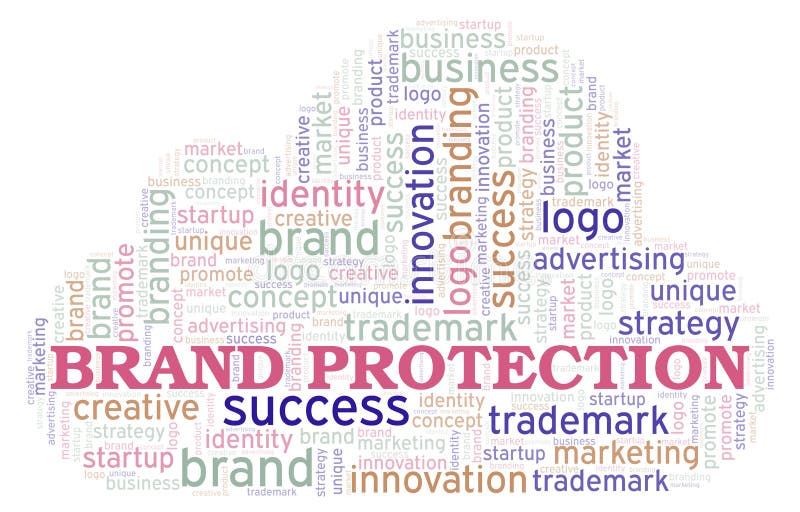Strategic Approaches to Safeguarding Your Online Products
You should think about protecting your goods and avoiding intellectual property rights infringement when you are trying to market them. When planning, think about the best strategies to avoid infringements and deal with those that occur in your exclusive region.

You must be aware of your options and select the optimal course of action strategically for each product. The universal rules governing the protection of intellectual property rights also apply to business owners who decide to conduct their operations online.
Before Start
Comprehending the intricacies of your product or service and recognizing the tools that can proficiently safeguard your assets is paramount in the realm of online brand protection and intellectual property preservation. Trademarks, encompassing phrases, drawings, images, letters, colors, packaging, and even sounds, play a pivotal role in distinguishing one company's offerings from another in the digital landscape.
A judiciously selected trademark serves as a potent marketing instrument, facilitating a company's success within the marketplace, and remains a cornerstone in crafting a comprehensive online brand protection strategy.
Step 1 – Search
For an organization to secure its intellectual property, a trademark search is essential. Legal requirements mean that even beautifully made signs might not be able to serve as trademarks. To determine the risks involved with trademark registration and use, a trademark search examines previous trademarks that are similar to the sign. It assists in determining if an entrepreneur has exclusive rights in this respect if they already have a trademark.

Changes to the mark or list of products and services in the application might be made if similar indications are discovered to improve protection chances and prevent conflicts. It is advised to use patent attorneys' specialized services for this reason. The entrepreneur can move on to the next application process if they receive a positive outcome.
Step 2 – Application
The scope of protection for a trademark is determined by the products or services it's intended to represent, a crucial consideration in the realm of online brand protection. It is critical to evaluate a company's growth potential as well as its potential for expansion.
Given that a trademark application cannot be expanded once filed, it's cost-effective to consider filing for additional categories to safeguard future interests. In the context of Poland or the EU, protection is typically established at the national level, ensuring uniform safeguarding across all member states.
Registering a trademark confers exclusive rights to the symbol, effectively preventing other entities from using it to identify their products or services. The registration process with the Polish or EU Office generally spans around four months, providing a ten-year protection period, with the option of extension, which is a fundamental element of comprehensive online brand protection.
Step 3 – Monitoring
Because the Office does not notify us of subsequent trademark applications that may be judged identical to ours, the registration rights obtained should be "guarded." The onus is on the business owner to make sure that nobody penetrates his zone of safety.

Disclosing violations without taking action can have negative effects. IP law companies keep clients informed about applications for the same or similar trademarks and monitor databases.
Step 4 – Verifying the legality of the acts taken
Entrepreneurs can violate others' rights in several ways, such as by building websites, searching for trademarks, and promoting or selling products that are falsely branded with their trademark.
When registering a domain, the "first come, first served" norm is followed; however, if the name violates the rights of another party, the party may request that the name be withdrawn and that the party responsible for the unlawful usage be compensated.
Product presentation can also be problematic because using images from the internet could put the business owner at risk of being sued for copyright violation.
Verify the seller, and the country of purchase, and stay away from purchasing almost identical or comparable things from well-known Chinese auction websites. Evaluate online activity regularly and refrain from comparing products with trademarks or company names.
Use a wordmark rather than a metaphorical one if a trademark is necessary. Refrain from utilizing rival company names in Google AdWords as this could be interpreted as unfair competition or a violation of intellectual property rights.
Step 5 – Preventing violations
In cases where an individual employs one of the entrepreneur's trademarks as the title for an online domain, infringing upon the entrepreneur's intellectual property protection rights, the entrepreneur may opt for an amicable resolution by engaging in negotiations and eventually formalizing an agreement to secure domain rights.
Alternatively, they can pursue arbitration through the legal system. Specifically, for .pl domains, the National Chamber of Commerce in Warsaw and the Polish Chamber of Information Technology and Telecommunications' Court of Arbitration for Internet Domains stand as suitable forums to address such intellectual property protection disputes.

In addition to friendly discussions, the right holder may file a civil lawsuit if trademark rights or copyrights to images are violated by publication without the author's permission.
In these situations, the business owner has the right to file claims in common courts for a variety of things, including the cessation of unlawful activity, the elimination of unlawful activities' consequences, general damage compensation, or the return of unjustifiably acquired earnings.
Step 6 – Using initiatives for brand protection
The assistance provided by the most well-known online sales platforms to owners of registered intellectual property rights is a significant choice for the business owner to safeguard his rights.
Certain platforms need proof that an organization actively protects its developed intellectual property, such as through registered trademarks or industrial designs, before cooperating with them.

By signing up for brand protection programs on these sales or auction platforms, business owners can report unauthorized use of their trademark and ask for the removal of problematic listings or auctions.
Step 7 – Regular evaluation of rights
When you are on the market, it is worthwhile to periodically assess the level of protection provided by your offer and examine the assortment of industrial property rights. Perhaps the things need to be secured in new places, or perhaps the list of territories in the first application was too broad and should be restricted, or perhaps new products or names need to be protected.
You must follow the renewal timetable or delegate this task to a competent law company. The advantages of exclusive rights are quite real; in addition to guaranteeing exclusivity of use, they boost the company's value and reputation and make a great instrument for your business plan. Therefore, while making such crucial decisions, the advice of attorneys who specialize in industrial property law may be quite helpful.
Conclusion
Safeguarding your goods and intellectual property is essential for business success in the digital sphere. You may successfully secure your online presence by putting proactive measures into place including trademark registration, monitoring violations, and participating in brand protection initiatives.
Assess your intellectual property rights on a regular basis to make sure they are protected going forward and to take care of any hazards. Getting legal help might help you even more in your quest to keep your brand unique and build its reputation.




